Dipterocarpus alatus Roxb. ex G. Don
| Etymology | Genus | Two-winged (Dipteras) fruit (karpos) |
|---|---|---|
| Species | Winged | |
| Family | Dipterocarpaceae | |
| Synonyms | - | |
| Common Names | Hairy-Leaved Apitong, Keruing, Yang, Gurjin | |
| Status | Exotic: Cultivated Only | |
| Form | Tree | |
| Native Distribution | Cambodia, Myanmar, Philippines, Bangladesh, Thailand, Vietnam | |
Diagnostics:
Sparingly cultivated in Singapore, it can grow up to 40m. The leaves are elliptic to ovate. It has dense hairs covering the "young twigs, buds, stipules, lower surface of leaves, especially on midrib and secondary nerves, inflorescences and calyx tube" (Pooma et al., 2017). The fruit has two wings holding a nut, which has five persistent calyx ridges on it.
Interesting Facts:
This forest tree is most impressive in its full glory in Vietnam, Ho Chi Minh City, District 1, where many of the large specimens are believed to have been planted approximately a century ago during the French colonial era (Ng, 2010).
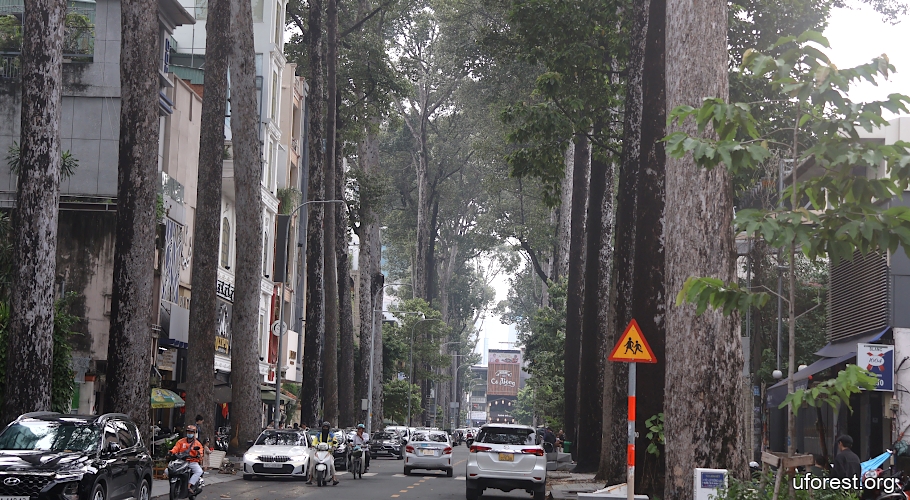
Rows of huge Dipterocarpus alatus along Sương Nguyệt Anh Road, Ho Chi Minh City, Vietnam.
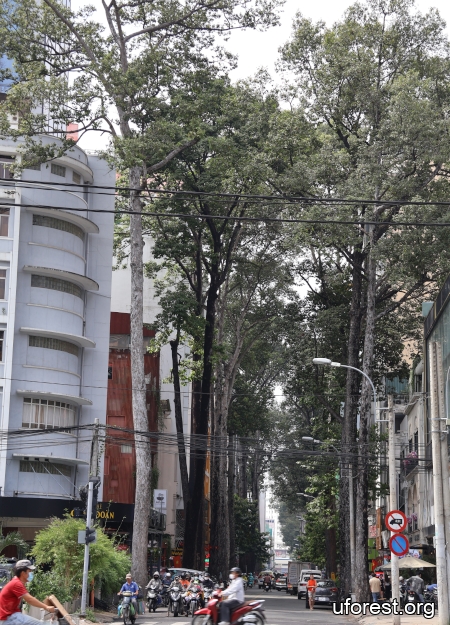
Full view of the trees.
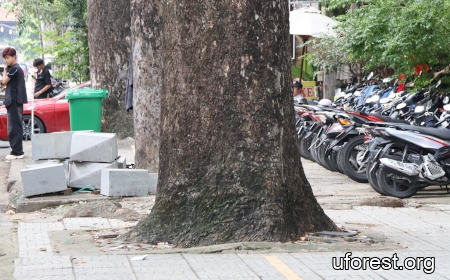
Trunk.
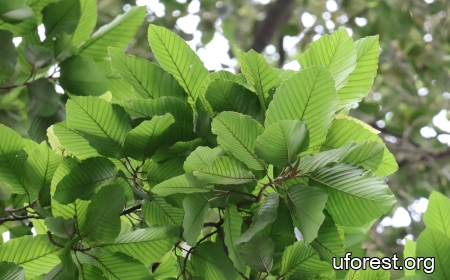
Leaves.
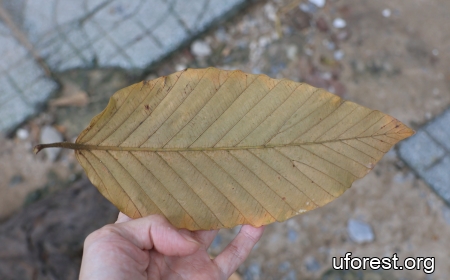
Fallen leaf.

Unriped fruits.

Dried and ripe fruit.
References
Ng, F. S. P. (2010). Dipterocarpus alatus—iconic giant street tree of Ho Chi Minh City. Tropical Gardening. Accessed on 4-Nov-2025. https://tropicalhorticulture.blogspot.com/2010/05/dipterocarpus-alatus-iconic-giant.html
Pooma, R., Poopath, M., & Newman, M. (2017) Dipterocarpus alatus Roxb. ex G. Don (Dipterocarpaceae). In e-Flora of Thailand (Vol. 13, Pt. 4, pp. 557–685). Forest Herbarium, Department of National Parks, Wildlife and Plant Conservation.
Author: Siyang
Posted: 2025-11-04